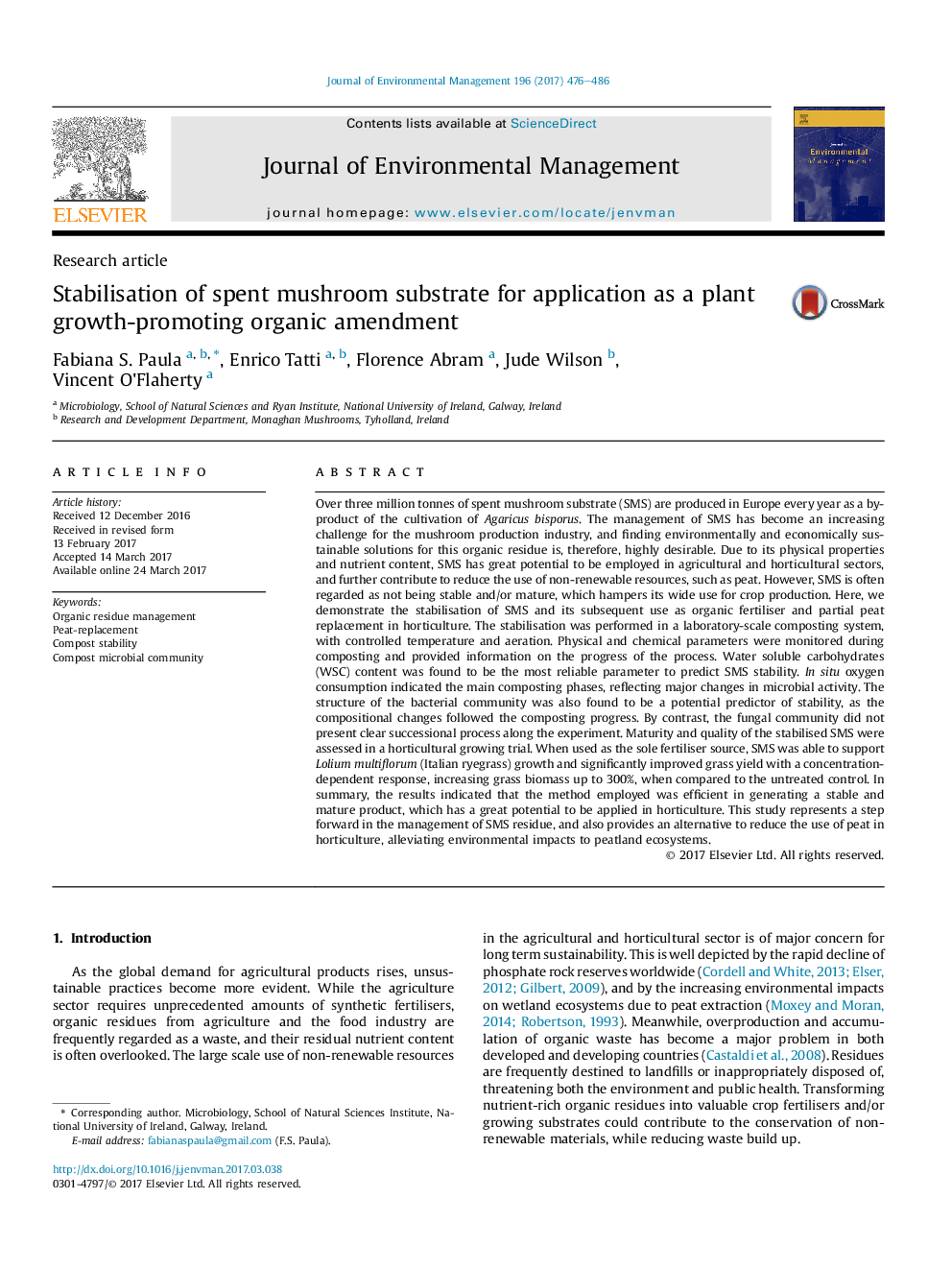| Article ID | Journal | Published Year | Pages | File Type |
|---|---|---|---|---|
| 5116687 | Journal of Environmental Management | 2017 | 11 Pages |
â¢An efficient stabilisation process for spent mushroom substrate (SMS) is proposed.â¢Stability was predicted by soluble carbohydrate content and oxygen consumption.â¢Bacterial community turnover is a potential predictor of stability.â¢SMS amendment improved grass yield with a concentration-dependent response.
Over three million tonnes of spent mushroom substrate (SMS) are produced in Europe every year as a by-product of the cultivation of Agaricus bisporus. The management of SMS has become an increasing challenge for the mushroom production industry, and finding environmentally and economically sustainable solutions for this organic residue is, therefore, highly desirable. Due to its physical properties and nutrient content, SMS has great potential to be employed in agricultural and horticultural sectors, and further contribute to reduce the use of non-renewable resources, such as peat. However, SMS is often regarded as not being stable and/or mature, which hampers its wide use for crop production. Here, we demonstrate the stabilisation of SMS and its subsequent use as organic fertiliser and partial peat replacement in horticulture. The stabilisation was performed in a laboratory-scale composting system, with controlled temperature and aeration. Physical and chemical parameters were monitored during composting and provided information on the progress of the process. Water soluble carbohydrates (WSC) content was found to be the most reliable parameter to predict SMS stability. In situ oxygen consumption indicated the main composting phases, reflecting major changes in microbial activity. The structure of the bacterial community was also found to be a potential predictor of stability, as the compositional changes followed the composting progress. By contrast, the fungal community did not present clear successional process along the experiment. Maturity and quality of the stabilised SMS were assessed in a horticultural growing trial. When used as the sole fertiliser source, SMS was able to support Lolium multiflorum (Italian ryegrass) growth and significantly improved grass yield with a concentration-dependent response, increasing grass biomass up to 300%, when compared to the untreated control. In summary, the results indicated that the method employed was efficient in generating a stable and mature product, which has a great potential to be applied in horticulture. This study represents a step forward in the management of SMS residue, and also provides an alternative to reduce the use of peat in horticulture, alleviating environmental impacts to peatland ecosystems.
